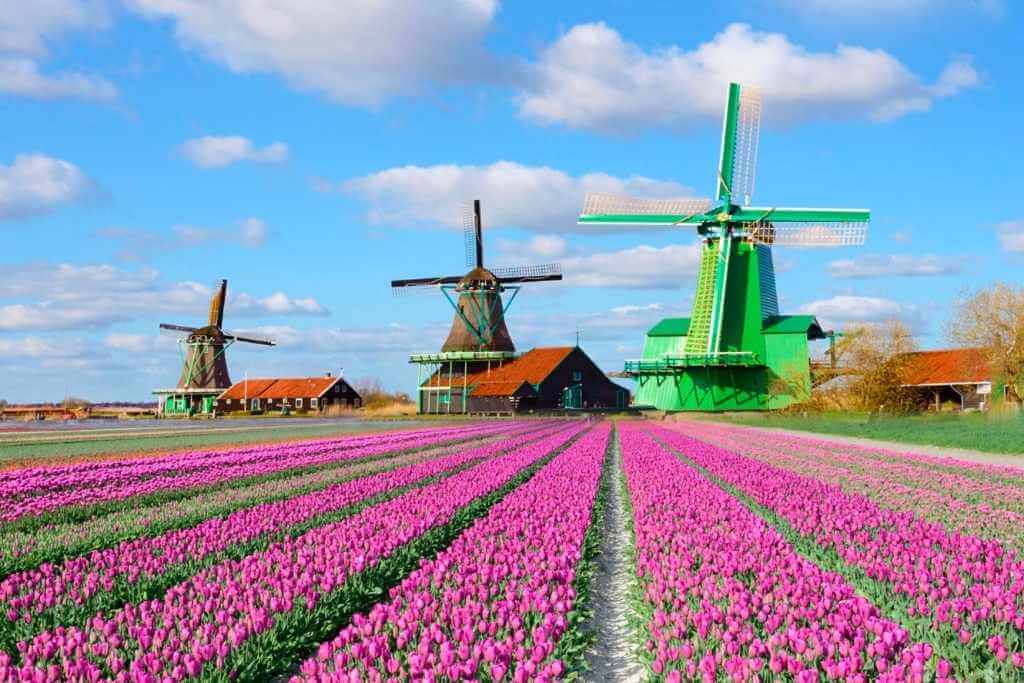Popular Zaandam neighborhood De Zaanse Schans is located close to Zaandijk town in the Netherlands. The neighborhood is well known for a variety of things, the most well-known of which is its array of windmills.
Tourists can easily reach Zaanse Schans because it is close to Amsterdam. Working windmills of various types and other monuments make up the collection at Zaanse Schans.
An oil spice mill, sawmills, and oil mills are all part of the collection. The Zaanse Schans Windmills Facts are listed below.
Most of the Windmills Were Relocated to Zaanse Schans
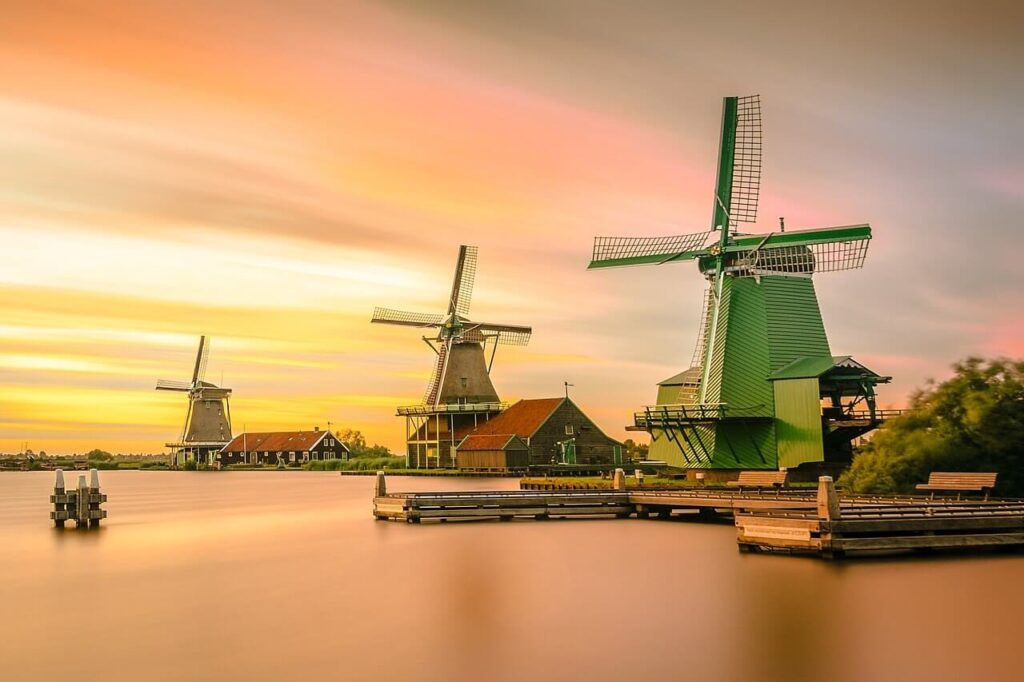
Old structures were moved from Zaanstreek to the Zaanse Schans between 1961 and 1964. The mills, their shops, and other buildings were among these.
Lowboy trailers were used to move these enormous structures. A semi-trailer with two drops in deck height is referred to as a lowboy trailer. Due to this feature, the trailer can transport loads that other trailers cannot, up to 12 feet (3.66 meters) in height.
Two of the windmills stayed put at De Zaanse Schans because they didn’t need to be moved, which is also where they were initially built.
Zaanse Schans: Things you can’t miss in this charming Dutch village
One of the Top Tourist Attractions Is the Windmills
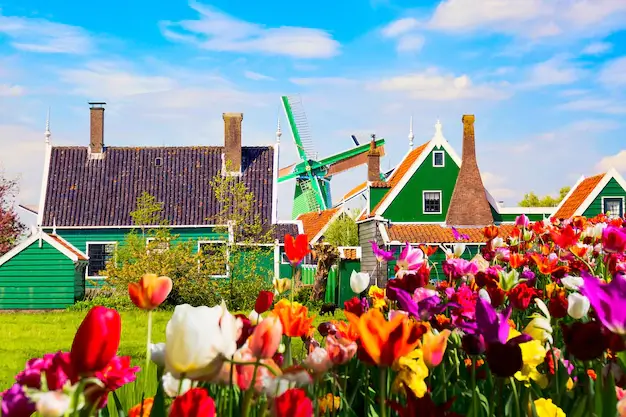
The Netherlands’ history and culture are heavily influenced by windmills. Windmills are still strewn about the nation in a number of towns, cities, and villages, including Amsterdam.
However, no other location compares to De Zaanse Schans for one to truly experience a variety of windmills and experience technology. A popular international tourist destination, the Zaanse Schans receives millions of visitors each year.
Not only can you see working windmills here, but you can also see a variety of them. The Netherlands is being positioned to live up to what visitors expect of it.
There are clog makers and workshops, mustard soup and apple pie, booklets with windmill information that have been translated into many different languages, etc.
The Only Public Windmill In Amsterdam: The Sloten Windmill
Some of the Zaanse Schans mills are still in operation.

Some of the mills were put back into operation after being moved from Zanstreek. Others are copies that date back to the twenty-first century.
For instance, the oil mill De Zoeker is running. Other active mills include the sawmill De Gekroonde Poelenburg, the De Huisman, which produces mustard, and the De Bonte Hen, which produces oil.
4 Villages near Amsterdam If You Want To Escape The City
The windmills were built following the sixteenth century.
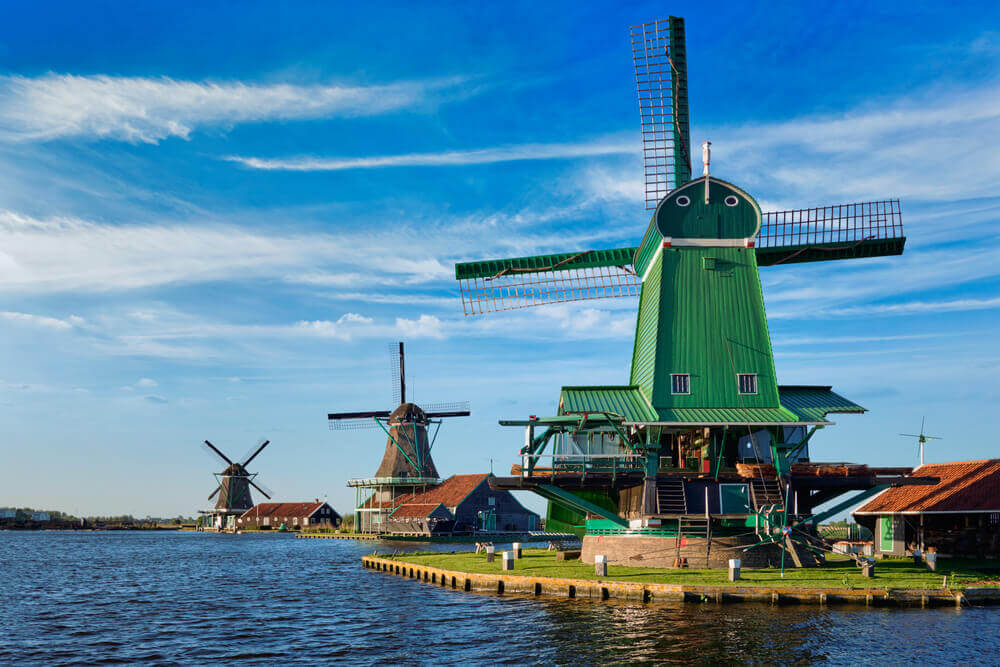
In the vicinity of De Zaanse Schans, several windmills were built between the 17th and 18th centuries. Over 600 windmills are rumored to have existed in this region.
The first industrial zone in the area was established when these mills were built. This is due to the mills’ essential role in the creation of numerous goods and services.
This includes products like oil, sawn wood, paint, and ground spices as well as services like land reclamation.
Eight mills can be found in Zaanse Schans.
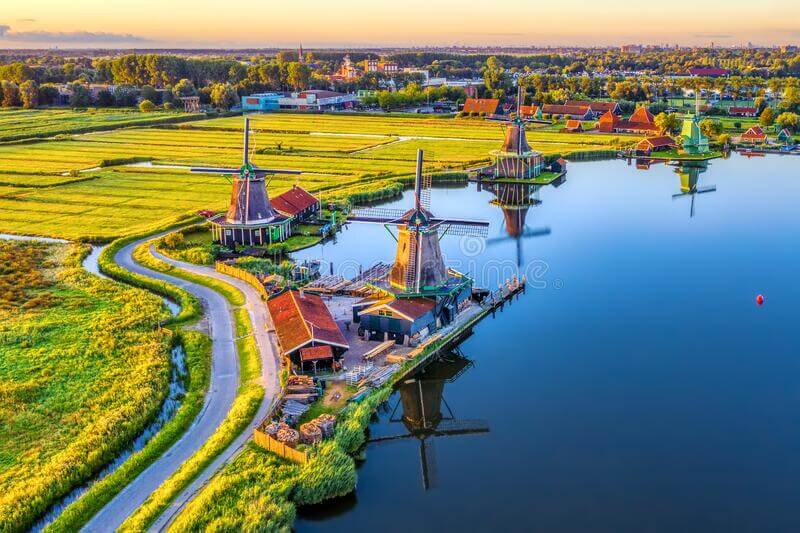
At Zaanse Schans village, there are a total of eight windmills. An oil mill called the De Zoeker, also called the seeker. De Huisman, a mustard mill, also known as “The Houseman.” A sawmill called De Gekroonde Poelenburg (The Crowned Poelenburg).
A dye mill is called The De Kat (The Cat). A sawmill called Het Jonge Schaap (The Young Sheep). An oil mill called The De Os (The Ox). An oil mill called De Bonte Hen (The Spotted Hen). A sawmill called Het Klaverblad (The Cloverleaf).
The Collection is home to the world’s only paint manufacturing mill.
De Kat is the last remaining operational windmill that produces paint. In 1646, the first “De Kat” mill was built as an oil mill. After being destroyed by fire in 1782, it was quickly rebuilt.
Up until 1904, when it underwent partial demolition, the mill was still in use. The eight-sided paint mill “De Duinjager” was relocated from its original location in 1960 as a result of urban development. The previous “De Kat” storehouse was then covered over with it.
Chalk and other raw materials are once again processed at the mill to make paint pigments the old-fashioned way. The mill is owned by the Vereniging De Zaansche Molen.
The Best Places To See Dutch Tulips For Free
Open 365 days a year
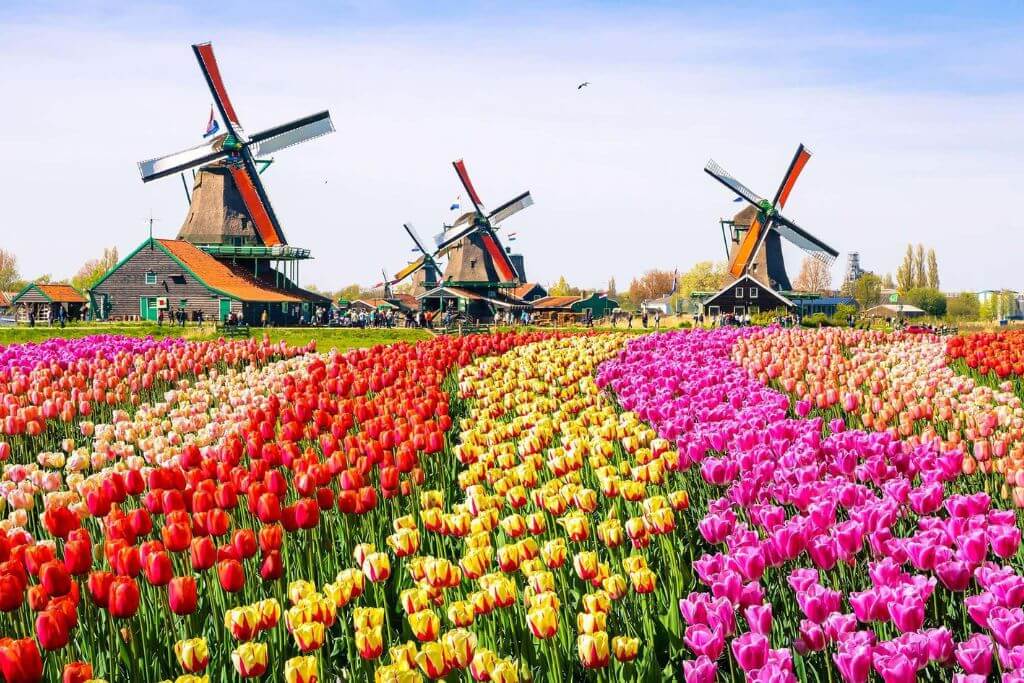
All year long, De Zaanse Schans is open and has a variety of attractions. This includes traditional artisan demonstrations, shops, cafes, and restaurants. It also includes windmills.
In the busy months of April through November, almost everything is open seven days a week from 10:00 to 17:00. There may be closures at certain attractions on weekends and during holidays (low season).
Some windmills restrict access to a small number of people at a time or are closed to the public while they are in operation.
Zaanse Schans Offers More Attractions Than Just Windmills
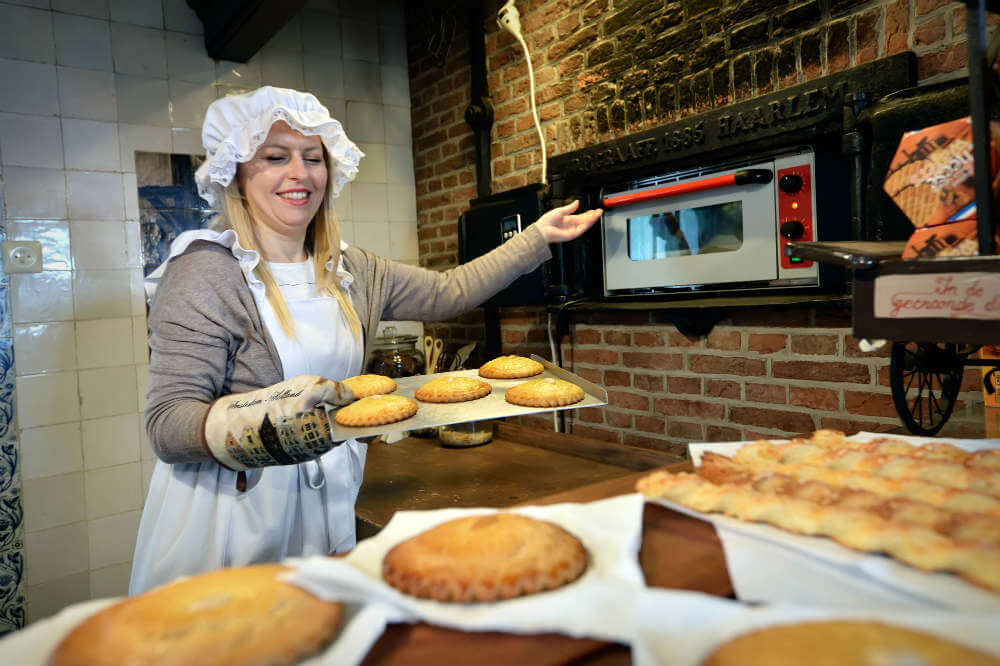
The Zaanse Schans is home to seven museums in addition to the infamous windmills. These include the Bakery Museum, Albert Heijn Museum Shop, Jisper House, Zaan Time Museum, and Weavers House.
Restaurants, boat rides, and artisan demonstrations are some of the area’s additional attractions.
For Years, The Mills Maintained Holland’s Economy
Early windmill construction led to the development of the Netherlands’ industrial and economic sectors. As an illustration, consider the De Gekroonde Poelenburg, also known as Holland’s secret weapon.
This technology allowed the Dutch to saw wood much more quickly than they could before. The Dutch could construct ships more quickly thanks to the quick production of wood.
Holland became a maritime power as a result of trade, the development of a navy, and exploration of the oceans. This had enormous economic advantages for the country.
There were many different kinds of windmills in the nation, some of which were used to produce goods that were traded and others to reclaim lands.
Easy Access to Zaanse Schans
Transport is quick and convenient, whether you’re going to the windmills, the museums, or just De Zaanse Schans village. From Amsterdam Central Station, the area is 40 minutes away by bus.
It takes just 15 minutes to walk from Koog-Zaandijk station, where one can take a train, to the mills. The river, which is a navigable body of water, is also close to the mills.
